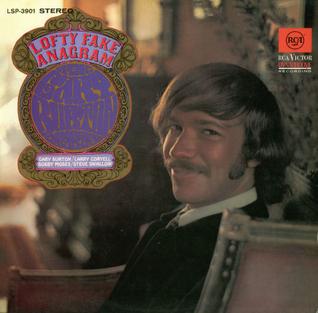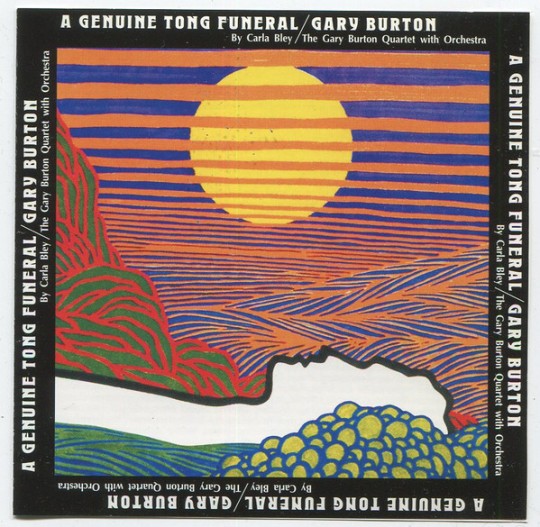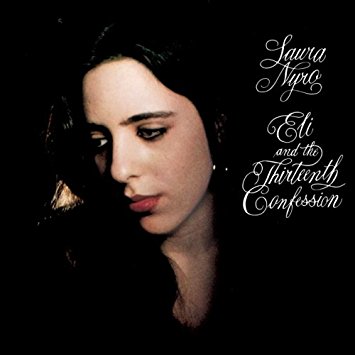Fifty Year Friday: Joan Baez, Baptism: A Journey Through Our Time, Randy Newman

From 1967 continuing into 1968 and forward, popular music continues to become more serious, stimulating, and consequential at the same time that modern concert hall music (commonly called twentieth century classical music, modern classical music or avant-garde classical music) continues to struggle to appeal to sizable audiences, with most classical music concerts programming music from the 19th and 18th centuries with a few early, relatively accessible twentieth century works, like Debussy’s orchestral works or Stravinsky’s Firebird included now and then.
In the late sixties many of the best artists and bands in popular music became just as intent on creating works of artistic value as anyone in the more traditional and established areas of the fine arts. When such artists or bands were lacking in a given area, they would either extend their own skills or reach out to others to assist them in completing a given objective or vision. More and more this meant including orchestration in their albums. At first this may have been more driven by producers and the commercial interests of the record companies, and in many of these cases the orchestration was added as something appended to the original product, as in the case with Stanley Turrentine’s “Look of Love” where strings are overdubbed on top of previously recorded tracks. But there were also many cases where the orchestration was part of the fabric of the music — or where electronic keyboards and more sophisticated usage of electric guitars, electric bass guitars and percussion replace the instruments of the traditional orchestra, further empowering the artistic determination of the artist or band.
Before the prevalence of electronic keyboards, either the artist or someone in the band had to be a skilled orchestrator or be able to effectively collaborate with a skilled arranger and orchestrator. In Joan Baez’s case, she was able to partner with Peter Schickle on three of her albums. Schickle, the mastermind behind PDQ Bach, with three PDQ Bach albums already to his credit on Vanguard, was also composing for film when he partnered with her for the third time on Joan’s 1968 concept album, Baptism. Though neither a commercial nor critical success, Baptism is a strong political statement against war and the ongoing inhumanity characteristic of “civilized” societies. No doubt, some who had purchased this album were disappointed at the ratio of spoken word to singing, and I suspect this is not an album many will care to listen to more than once or twice, but as a document of the times, this remains an effective artistic statement with a well-selected mix of readings. some excellent orchestration, and Baez’s beautiful vocals.
Track listing [from Wikipedia]
- “Old Welsh Song” (Henry Treece)
- “I Saw the Vision of Armies” (Walt Whitman)
- “Minister of War” (Arthur Waley)
- “Song In the Blood” (Lawrence Ferlinghetti, Jacques Prévert)
- “Casida of the Lament” (J.L. Gili, Federico García Lorca)
- “Of the Dark Past” (James Joyce)
- “London” (William Blake)
- “In Guernica” (Norman Rosten)
- “Who Murdered the Minutes” (Henry Treece)
- “Oh, Little Child” (Henry Treece)
- “No Man Is an Island” (John Donne)
- “Portrait of the Artist As a Young Man” (James Joyce)
- “All the Pretty Little Horses” (Traditional)
- “Childhood III” (Arthur Rimbaud, Louis Varese)
- “The Magic Wood” (Henry Treece)
- “Poems from the Japanese” (Kenneth Rexroth)
- “Colours” (Peter Levi, Robin Milner-Gulland, Yevgeny Yevtushenko)
- “All in green went my love riding” (E. E. Cummings)
- “Gacela of the Dark Death” (Federico García Lorca, Stephen Spender)
- “The Parable of the Old Man and the Young” (Wilfred Owen)
- “Evil” (N. Cameron, Arthur Rimbaud)
- “Epitaph for a Poet” (Countee Cullen)
- “Mystic Numbers- 36”
- “When The Shy Star Goes Forth In Heaven” (James Joyce)
- “The Angel” (William Blake)
- “Old Welsh Song” (Henry Treece)

It’s certainly not a mystery why talented composers would choose to pursue the popular music of their times — music that they listen to, their friends listen to, and reflect the time they live in — as opposed to less popular music of academia, which can only unconvincingly assert its lineage to the great music of Bach, Mozart and Beethoven. One should expect that the most engaging, commercially viable, and prevalent music would attract a substantial proportion of able and talented musicians and composers: it was the case during the jazz era, the swing era, the be-bop era, and in the late sixties, during some of the most exciting days of rock music.
Randy Newman’s father and mother were not professional composers, but three of his uncles were: Alfred Newman, Lionel Newman and Emil Newman — all noted Hollywood film-score composers, with the most famous, Alfred Newman, conducting, arranging and composing about two-hundred film scores, nine of which won Academy Awards. Randy already had written a number of songs including a B-side (“They Tell Me It’s Summer”) for a hit single of the Fleetwoods (“Lovers by Night, Strangers by Day”), the song lyrics for Bobby Darin’s “Look at Me” (the title song of the 1964 movie, “The Lively Set”), and songs recorded by Dusty Springfield, Petula Clark, Jackie DeShannon, and the O’Jays, when he dropped out of UCLA, only one semester short of a music degree. By then, he had taken courses in music theory, music history and probably one or more orchestration classes, though clearly he had already learned the basics before his UCLA studies having written background music for a 1962 episode of TV’s The Many Loves of Dobie Gillis, and then eventually providing music for other TV shows including Lost in Space, Peyton Place, Voyage To The Bottom Of The Sea and one of my favorites as kid, Judd For The Defense.
With several years of experience in songwriting and orchestra scoring, Randy Newman released his first album, Randy Newman, in June of 1968. The album did not sell well, and Warner Brothers provided any dissatisfied buyers the opportunity to exchange the album for any other album in their catalog.
But this album is a keeper. From the beginning we see a thoughtful approach to songwriting. The first song, “Love Song” immediately makes an impact with its dry, wry humor, its shrewdly crafted orchestration, and its structure: Newman’s ending to the song eschews the standard return of the chorus and ends with a bridge section that is followed by a final, modified verse with a simple brief coda, creating not a climax, but an ending that aligns well with the sober, yet tongue-in-cheek message: “When our kids are grown with kids of their own, they’ll send us away to a little home in Florida; we’ll play checkers all day ’til we pass away.”
Newman’s unique delivery, the reflective piano accompaniment, the excellent orchestration, often veering intentionally away from the core song material, make their mark on each and every track. Repeatedly Newman is taking up the voice of the underdog, the rejected, or the trodden-down, forgotten citizen, even when reflecting on the status of God as in “I Think He’s Hiding.” Songs like “Bet No One Every Hurt So Bad”, “Living Without You”, and “Linda” not only reflect on the sadness and angst of the persona of the lyrics (the point of view, narrator, speaker) but provide commentary on the character of that persona such that we may feel some sympathy but would sometimes also wish to distance ourselves a little from some of these characters if they came into our vicinity.
On the song “Cowboy”, perhaps the best song on the album, we feel genuine empathy and compassion for the persona. This is a song from the heart without any clever commentary or cloaked irony. Newman raises this to an art song with his orchestration. The work starts off with the images of the prairie, the orchestration developing and sculpting the mood, supporting the lyrics and evoking some of the characteristics of the music of Aaron Copland. Following “Cowboy”, “Beehive” is an interesting variant on the well-known “St. James Infirmary Blues”, followed by the classic “I Think It’s Going to Rain Today”, recorded by Judy Collins in 1966. Ending this excellent album is “Davy The Fat Boy” — a track that might be considered politically incorrect today, but it is not a portrait about Davy but about the scoundrel exploiting him. The orchestration/arrangement is again the star here, and it is every bit of an art song as anything turned out by the Beatles or Beach Boys.
In an act of full disclosure here, I once saw Newman perform “Love Story” on network television a very long time ago — perhaps this was in 1970 on an “In Concert” program — or perhaps on late night TV — and at that time, hearing him accompanied only by his piano, I was not impressed enough to follow-up further by purchasing an album or requesting it as a possible present for the next birthday or Christmas. It turned out that for me, Randy Newman was an acquired taste, cemented by taking a music history course at my local college during my senior year in high school, in which course, the cellist, and course instructor, Terry King, played part of Newman’s “Sail Away” album. King had played on that album and reminisced about the experience. Later that same week, Mr. King played, with great pride, a recording of Schubert’s Erlkönig. At the end, one of the students asked “what was so special about that? It’s just a song.” King, unflustered, replied that no, Erlkönig was not an ordinary song, it was truly something extraordinarily special, but didn’t go into any details to support that conclusion. At that point, I thought, yes, Schubert’s Erlkönig is quite dramatic and special — and even catchy, in an early-nineteenth-century-equivalency-of-hard-rock sort of way — but it is a song — and I thought back to that earlier class in which King had played Randy Newman — someone who also wrote songs, but one hundred and fifty years later. Yes, a song is a song, but there is no particular boundary to how good (or bad) it can be. It’s up to the listener to make that evaluation, and if enough listeners have a favorable opinion over time, that song may have some longevity.
So possibly, the songs of Randy Newman will be around in the 22nd century. If so, this album, out of print for fifteen years before being released on CD, and generally ignored by the rock critics of 1968, provides more than just an interesting assortment of early Randy Newman tunes, but a complete, and rewarding, musical experience.
Track listing [from Wikipedia]
All songs written and arranged by Randy Newman.
- “Love Story (You and Me)” – 3:20
- “Bet No One Ever Hurt This Bad” – 2:00
- “Living Without You” – 2:25
- “So Long Dad” – 2:02
- “I Think He’s Hiding” – 3:04
- “Linda” – 2:27
- “Laughing Boy” – 1:55
- “Cowboy” – 2:36
- “Beehive State” – 1:50
- “I Think It’s Going to Rain Today” – 2:55
- “Davy the Fat Boy” – 2:50


















